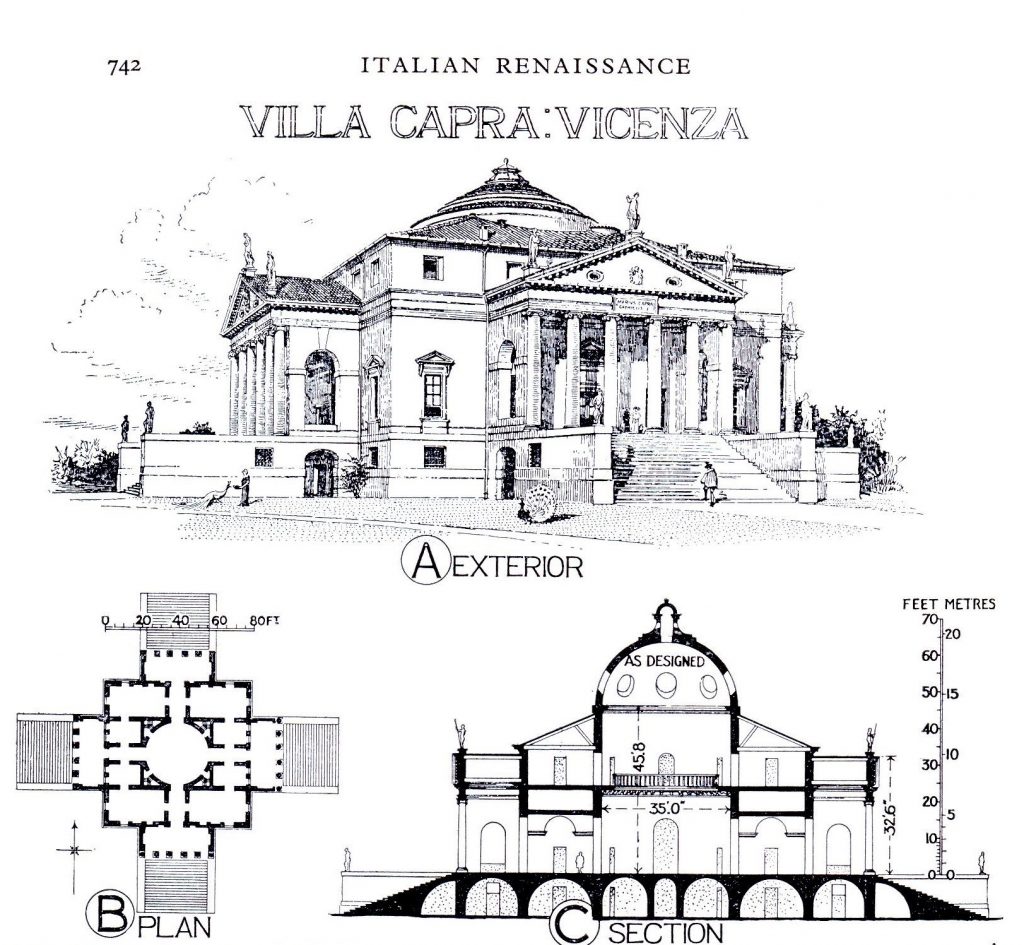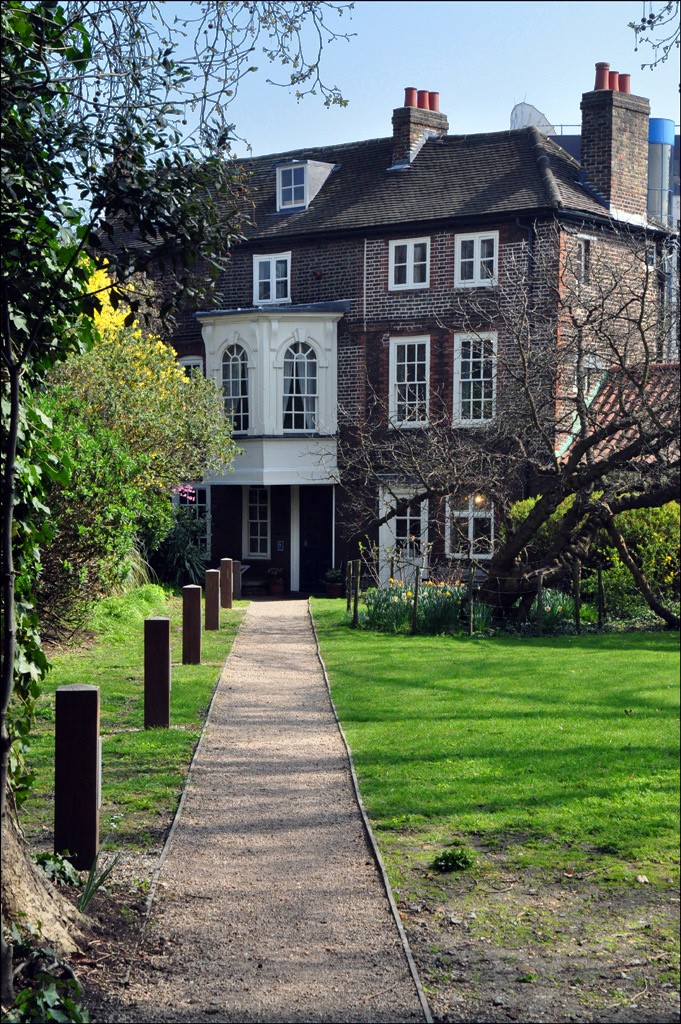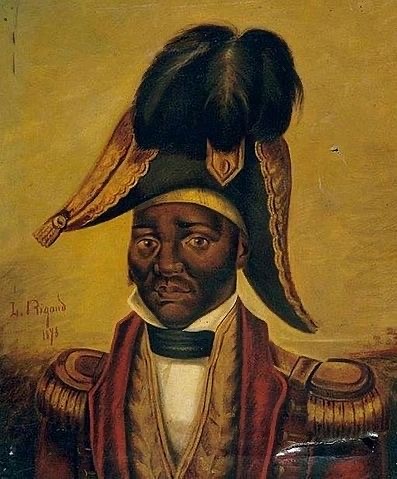An A to Z of the Chiswick House Archives: N is for Notable November births
In the latest in our A-Z series, volunteer archivist Cluny Wells researches the three notable November births and a victory against all odds!
Andrea Palladio, born 8 November 1508
Italian architect Andrea Palladio was born on 8 November 1508 in Padua. His birth name was Andrea di Piero, becoming Palladio in his thirties, when his patron at the time Count Giangiorgio Trissino named him after Pallas Athene, goddess of the arts. Palladio is significant to Chiswick House & Gardens as the main architectural inspiration of the third Earl of Burlington.
When he was 13, Palladio’s father, a miller, arranged a six-year apprenticeship for him in the workshop of Bartolomeo Cavazza da Sossano, an architect and stonemason. Two years into his apprenticeship, Andrea ran away to Vicenza but had to return because of his contract. Soon after his return he joined the guild of bricklayers and stonemasons and could then join Giovanni di Giacomo da Porlezza’s workshop in Pedemuro. Although he tried to set up his own workshop, this only lasted for a short while, and he was still a member of the Pedemuro workshop at the age of 26. After four years he was then introduced to future clients and enabled to pursue his architectural studies through the support of Count Trissino.
Around 1534 he married a carpenter’s daughter, and they had four sons and a daughter. He was awarded the title of architect in August 1540, progressing from stonemason, and he continued his studies with several visits to Rome, Tivoli and Palestrina between the years of 1541 and 1547.
Andrea Palladio’s thoughts on architecture were based on the writings of Vitruvius, a Roman architect, published in 1486. Palladio’s main written work, on which his fame and the durability of the architectural style known as Palladianism would rest, was known in English translation as the Four Books of Architecture, first published in 1570 in Venice. Within the first book he was concerned with the five orders of architecture, among other building techniques. These orders are known as Tuscan, Doric, Ionic, Corinthian and Composite in ascending order of importance, and expressed in columns, pilasters and architraves. Chiswick House & Gardens has examples of the Doric, Ionic and Composite.
One of Palladio’s most important buildings was the Villa Rotunda/Capra in Vicenza.

Jonathan Swift, born 30 November 1667
99 years later, on 30 November the author Jonathan Swift was born in 1667 in Dublin. He was an Anglo-Irish author, satirist, poet and political pamphleteer, who became the Dean of St. Patrick’s cathedral, Dublin. As Swift often visited London, he was one of a group – the best known literary and artistic people of the day – who would regularly visit Lord Burlington. Chiswick House had by then become a centre of fashionable and clever society, which also included Alexander Pope, John Gay and David Garrick.
In 1726, Pope helped Swift to arrange for the anonymous publication of his book Gulliver’s Travels. It was an instant and an enduring success.
Between 1726 and 1730 Swift and Henrietta Howard exchanged letters, which now reside in the British Library. Henrietta, noted for her wit and intelligence, was a Lady of the Bedchamber to Queen Caroline and mistress to George II. She corresponded with many intellectuals of the day, including Swift, Horace Walpole, Pope and John Gay.
Henrietta was a supporter of Swift and his works, and their letters had a playful and friendly tone. But Swift was not writing out of pure friendship and admiration – gradually it appeared that he had ulterior motives.
Swift was unhappy in Dublin, and he wished to gain a high-profile Church post in England. He hoped to persuade Henrietta to use the influence at court that he assumed she would have, to speak on his behalf to the royal couple, to help his search for a position in the English Church. Henrietta’s position was complicated, although she was the King’s mistress, her power was very limited. As it became clear that Henrietta could not help Swift his messages turned sour and he accused her of not being a very sincere and honest friend after all. He remained as Dean of St Patrick’s in Dublin until his death.
The following quote from Gulliver’s Travels shows Swift’s understanding of just how colonies can be started and how the colonists can justify their actions to themselves and others:
For instance, a crew of pirates are driven by a storm they know not whither; at length a boy discovers land from the topmast; they go on shore to rob and plunder, they see a harmless people, are entertained with kindness; they give the country a new name; they take formal possession of it for their king; they set up a rotten plank, or a stone, for a memorial; they murder two or three dozen of the natives, bring away a couple more, by force, for a sample; return home, and get their pardon. Here commences a new dominion acquired with a title by divine right. Ships are sent with the first opportunity; the natives driven out or destroyed; their princes tortured to discover their gold; a free license given to all acts of inhumanity and lust, the earth reeking with the blood of its inhabitants: and this execrable crew of butchers, employed in so pious an expedition, is a modern colony, sent to convert and civilize an idolatrous and barbarous people!
William Hogarth, born 10 November 1697
One of nine children, William Hogarth was born on 10 November 1697 in Smithfield, London. Only he and two sisters grew to adulthood. His father Richard taught classical studies, and this meant that William had a classical education which children from his humble beginnings would not normally have enjoyed.
Hogarth was apprenticed to Ellis Gamble, a silver plate engraver, who perhaps because he was a relative, seemed to have waived the apprenticeship fee. William decided to set up on his own before his apprenticeship had finished. He attended the free academy run by Sir James Thornhill (Sergeant-Painter to the King) from his home studio in Covent Garden, and there he met his future wife Jane, Sir Thornhill’s daughter. Within this circle he also made contacts leading to future commissions. William and Jane eloped in 1728 and her parents were soon reconciled to the marriage, even though William was not as wealthy as they might have liked.
Hogarth bought his house in Chiswick in 1749. He called it ‘a little country box’. The house was then a weekend cottage, a getaway from his busy Leicester Fields (now Leicester Square) home. The house was eventually extended and became their permanent home. A mulberry tree grew in the garden, and pets such as Hogarth’s pug dog and a duck lived there. Hogarth had a studio above the now lost coach house at the bottom of the garden. Although Hogarth and Jane had no children of their own, they often had children staying with them from the Foundling Hospital for a holiday. Hogarth was a Governor of the Thomas Coram Hospital.
Hogarth’s best-known paintings: ‘The Beggar’s Opera’ were inspired by the theatre. ‘A Harlot’s Progress’, ‘The Rake’s Progress’ and ‘Marriage A-La-Mode’ were produced as series of prints, each telling a story with a moral topic.

A victory against all odds
Our last story is linked to residents of Chiswick through Napoleon Bonaparte, whose ideals were much admired by the Duchess of Devonshire, Georgiana and some of her Whig friends, when he first came to power in 1799. The Devonshires installed a bust of Napoleon in the Rustic House in his honour, a copy of which is still there. Their views of him changed overtime as he became more tyrannical to his subjects and sought battles with the rest of Europe, including Britain, to assert his supremacy in the balance of power.
Soon after the French Revolution began, the slaves in Haiti on the Caribbean island of Hispaniola, revolted against their colonial masters, and fought them for some time, whilst many slaves, including Jean-Jacques Dessalines had been freed by a decree of the revolutionary government in Paris in 1794, before Napoleon’s era really began.
A few years later Napoleon decided to reintroduce slavery and was prepared to send forces to deal with the continuing uprising of the ex-slaves in Haiti. The Haitian Revolution lasted 12 years. General Dessalines led the Slave Army, in the final battle of Vertieres, and defeated Napoleon’s forces on 18 November 1803. Haiti became independent on that day and has remained so ever since. Dessalines officially declared the Haitian Republic two months later.
Jean-Jacques Dessalines had been born a slave, and as a boy worked in the sugar plantations of Saint-Dominigue on Hispaniola. Since being freed he had fought for the French, his colonial masters, in different wars where alliances were made and broken, he and his men did not want to be returned to slavery, so they then fought long and hard against Napoleon to ensure victory. The Haitian Anthem is named after him ‘La Dessalinienne’, and there is a statue of him in the capital Port au Prince. Haiti is the only country in history to have been established by a force of black former slaves who defeated their former European colonial masters.

Sources:
Palladio, the complete buildings. Wundram, Pape and Martin
The Four Books of Architecture. Andrea Palladio
Wikipedia
Courtiers. Lucy Worsley
Hogarth. Jenny Uglow
On This Day in History. Dan Snow
All 3 images Wikimedia Commons